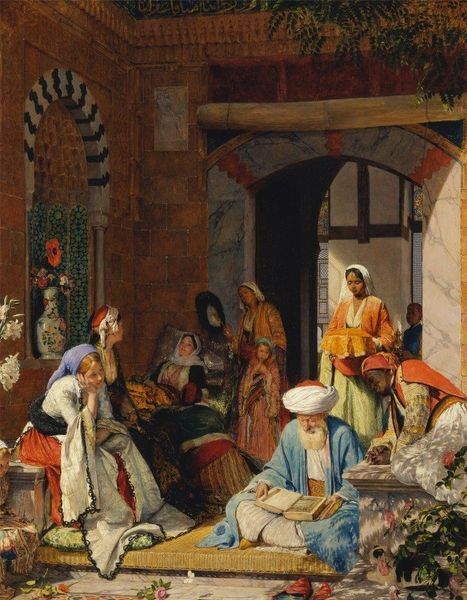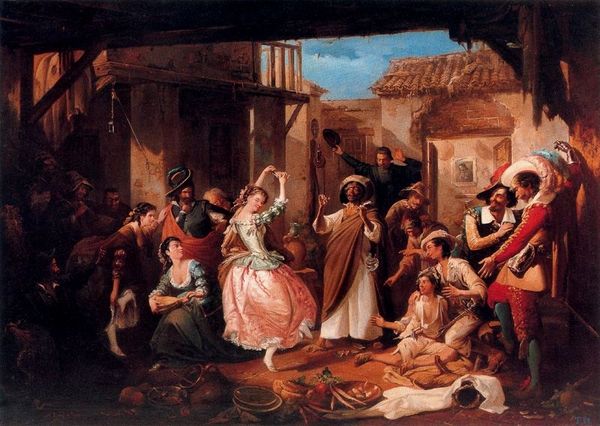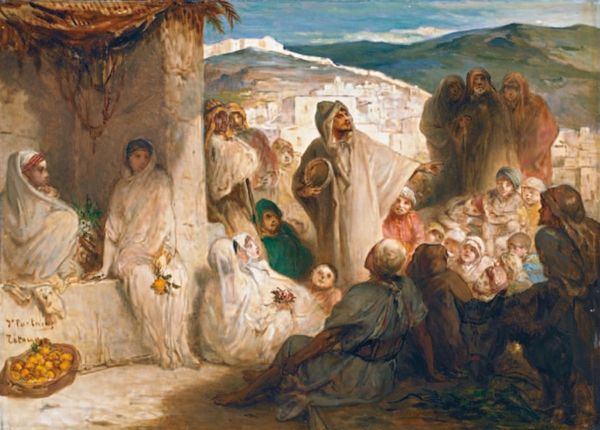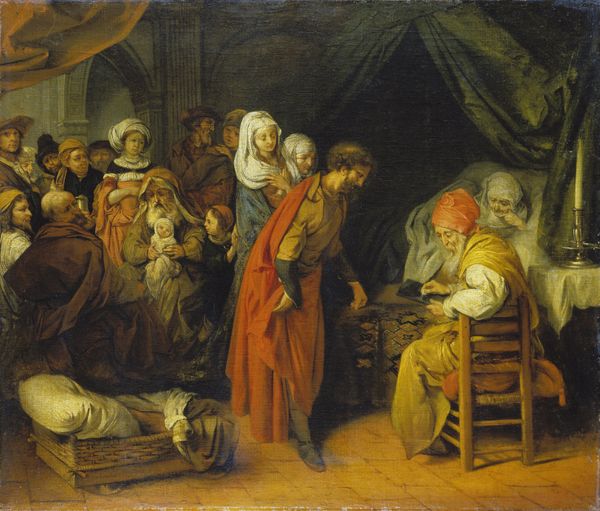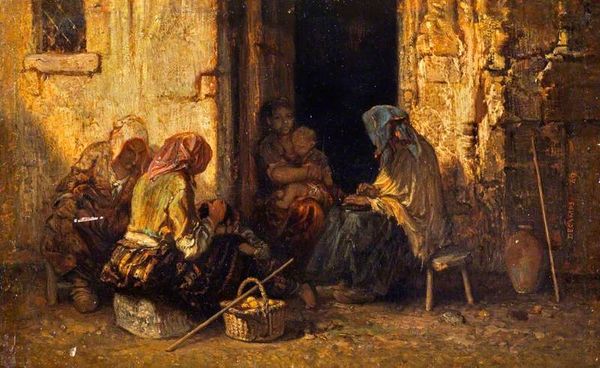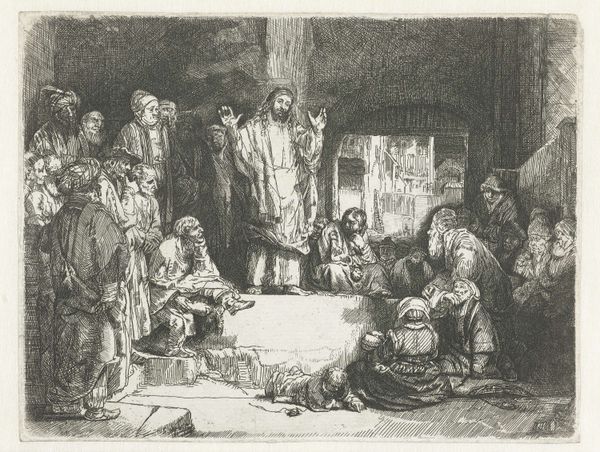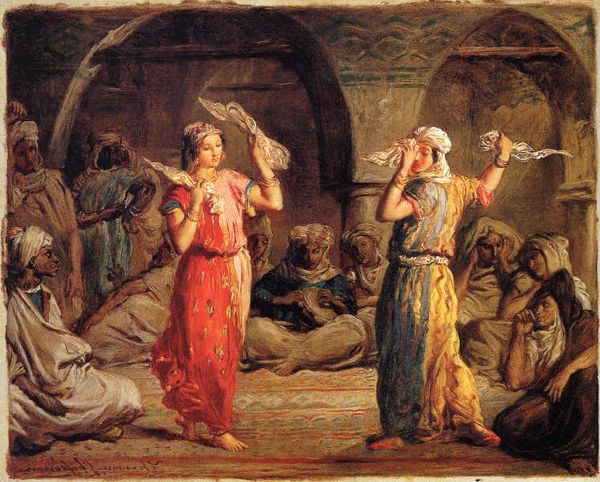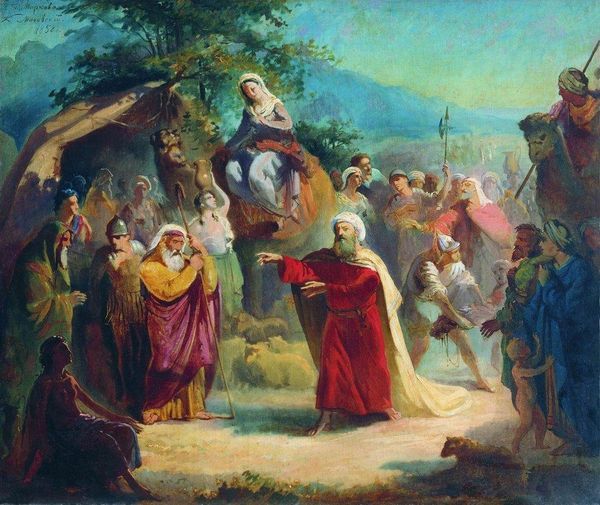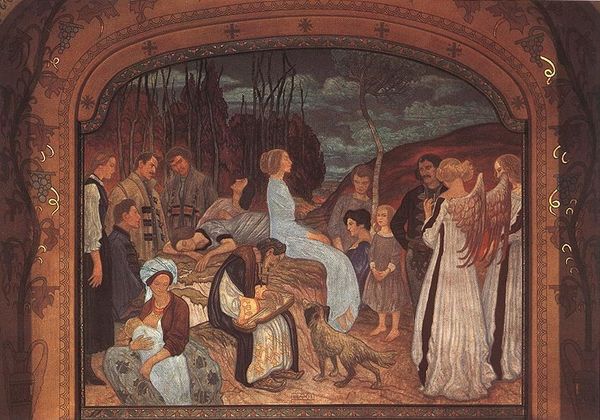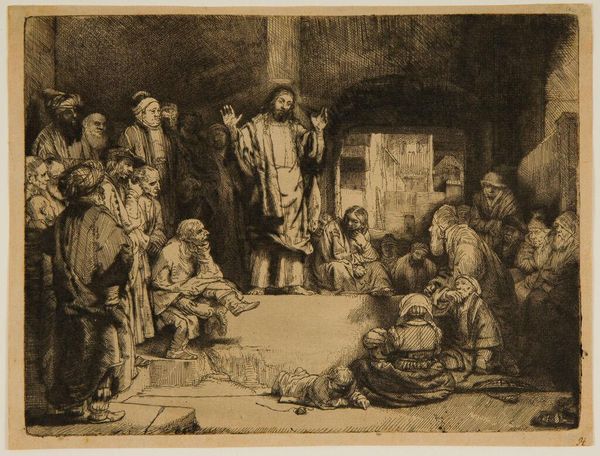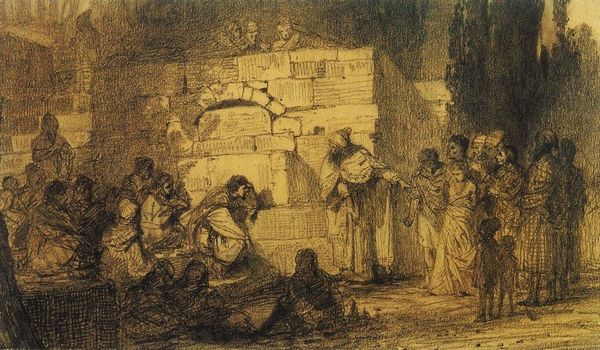
painting, oil-paint
#
painting
#
oil-paint
#
landscape
#
oil painting
#
orientalism
#
genre-painting
Dimensions: 24.8 x 33.8 cm
Copyright: Public domain
Curator: Just look at this striking scene! This painting, titled "A Dance for the Sultan," is an oil on canvas by Alfred Dehodencq. The eye is drawn immediately into the heart of the dance itself, isn’t it? Editor: Absolutely. I'm struck by the immediacy of the painting; it feels as though we're right there amidst the festivities, with the strong suggestion of heat and rhythmic energy. Dehodencq captures movement superbly. What stands out to you particularly in terms of symbolism? Curator: For me, it's the layering of performance. The sword dance itself holds potent symbolism, acting as a powerful visual signifier, of, perhaps, authority or celebration. Yet the painting places the dance within the spectacle *for* the Sultan, reflecting established orientalist tropes. Editor: Yes, the painting clearly plays into the fascination the West held for the East at this time. You can see that here—this genre painting depicts an intimate gathering under a makeshift pavilion. It highlights social dynamics and performative culture as something exotic for a European audience. It reflects a social lens more than an actual cultural experience, certainly. Curator: Precisely, these orientalist works helped form, and sometimes distort, the European understanding of Eastern customs, beliefs, and the "exotic" other. We see glimpses of power dynamics. The clothing alone sets each group apart. I’m intrigued by how dress contributes to the visual storytelling here. Editor: Dehodencq uses loose brushstrokes, focusing on the texture and colours of the costumes to imply opulence and intrigue. It’s clear that social position, in relation to the figure of the Sultan, becomes a performative expression too. His depiction speaks volumes about how the spectacle reflects power itself. Curator: Indeed, the dance, while seemingly joyous, may also act as a reminder of cultural and social positioning in relation to the figure of authority. The emotional register of such visual constructs extends to contemporary reflections, allowing us to consider our perceptions and assumptions even today. Editor: Yes, paintings like this offer valuable insights into historical perceptions, urging us to explore our own assumptions around cultural representation today. This offers a visual reflection point between history, art, and power, that reverberates far beyond this canvas.
Comments
No comments
Be the first to comment and join the conversation on the ultimate creative platform.
